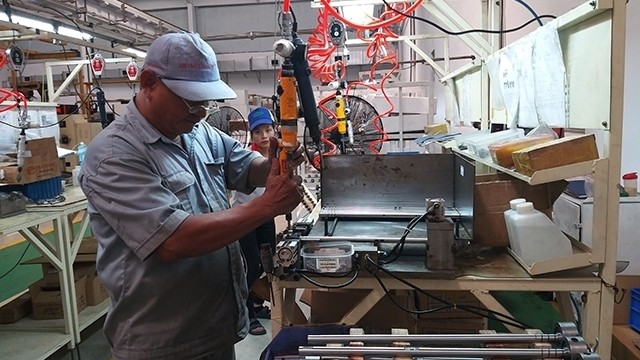Vietnam now ranks 67th among 141 economies in the world, making it the economy whose score improved the most globally and one of the best performers in Asia-Pacific.
This year is the first time that Vietnam has two component indexes with an absolute score of 100, namely inflation and terrorism incidence, whose score of 100 means no incidence.
Among the 12 pillars, only health saw its score decrease, while the score for macroeconomic stability remained unchanged and the scores for other pillars improved compared with the previous year.
In terms of ranks, the three pillars of infrastructure, health and financial system fell slightly while increases were seen in all other pillars.
What has made Vietnam such an impressive performer in the 2019 GCI? According to experts, first was the determination to reform economic institutions, with one of the major contents being the change of mindset in the administrative apparatus, removing all barriers which are hampering the innovation of the people and enterprises.
The government has promulgated a resolution on improving the business environment and enhancing national competitiveness each and every year since 2014, where it sets a specific goal to improve Vietnam’s position on international rankings and assigns ministries and agencies to implement, inspect and monitor the actual progress.
The Prime Minister also requests the inclusion of improving the business climate and enhancing national competitiveness as one of the emulation targets among local governments.
The result is the social confidence in an enabling state with concrete efforts such as eliminating and simplifying business conditions; changing the method in state management and inspection activities; stepping up the building of e-government and non-cash payment; reforming inspection of enterprises and reducing compliance costs for the people and enterprises.
In addition, Vietnam’s improvement was attributed to its ability to take advantage of opportunities from trade war towards luring foreign investment and becoming a more attractive trade centre in the region. Capitalising on trade liberalisation, combining external liberalisation with domestic reform through the removal of a wide range of business hurdles and business cost reductions have helped Vietnam turn challenges into opportunities, continuing to move forward in an increasingly uncertain world.
Attaining a higher rank is hard and maintaining the improvement momentum is even harder. A look at the history of Vietnam’s CGI rankings since 2006 shows that there was time when Vietnam’s position fell in both scores and ranks for three consecutive years. There was also a time when Vietnam saw its score improve but dropped in rank as Vietnam’s reform was little compared with the strong efforts of other economies. A prime example was 2018 when Vietnam’s score climbed by a slight 0.2 with three recognised reforms but dropped three places from the previous year to rank 77th of 140 economies.
Currently Vietnam ranks 6th in ASEAN and there remains a long way to go before Vietnam can make it to the top four. In order to attain such a goal, the commitment to reform must be maintained. The government needs to continue to axe business requirements seriously; narrow the scope of goods subject to specialised inspections; strongly promote electronic payment, helping to reduce costs, enhance transparency and fight corruption; and foster enterprise-centric innovations.
















